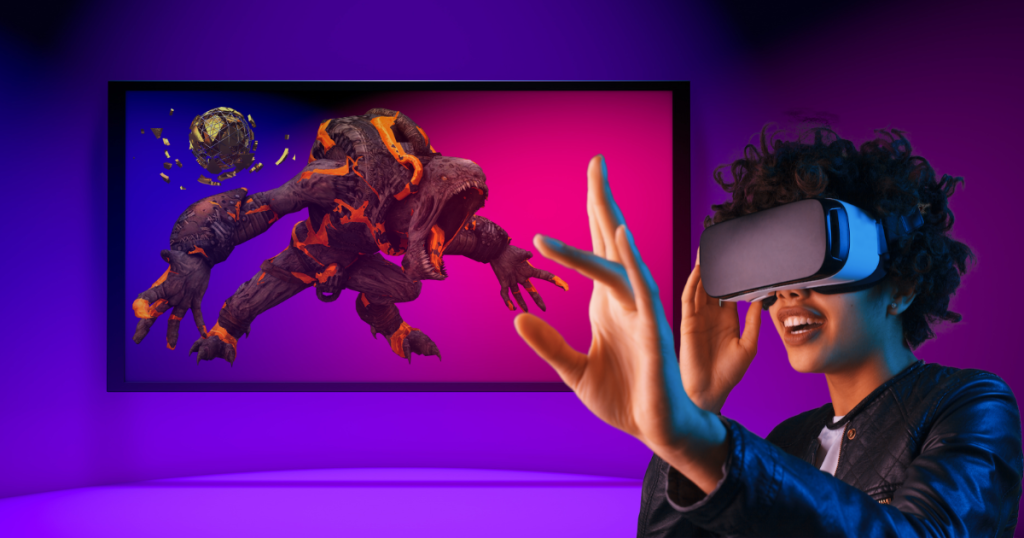Table of Contents
In the exhilarating realm of virtual reality (VR), players are transported to breathtaking virtual worlds, immersed in experiences that transcend the boundaries of traditional gaming. But what if you could share these captivating adventures with the world, allowing others to step into your virtual shoes and experience the magic alongside you? Enter the world of VR streaming, a powerful tool that empowers gamers to showcase their virtual exploits and connect with fellow enthusiasts across the globe.
Whether you’re a seasoned VR veteran or a curious newcomer eager to embark on this exciting journey, this comprehensive guide will equip you with the knowledge and tools to seamlessly stream your VR gameplay, turning you into a captivating VR streamer and a beacon for fellow virtual adventurers.
Gearing Up for VR Streaming: The Essential Equipment
Before diving headfirst into the world of VR streaming, it’s crucial to ensure you have the necessary hardware and software to deliver a smooth and enjoyable experience for both you and your audience. Here’s a rundown of the essential components that will form the foundation of your VR streaming setup:
VR Headset: The Heart of Your Virtual Immersion
The centerpiece of your VR streaming setup is undoubtedly the VR headset itself. This device serves as your gateway to virtual worlds, translating your movements and actions into immersive experiences. Popular options include the Meta Quest/Quest Pro/Quest 2/Quest 3 (formerly known as Oculus Quest), HTC Vive, and Valve Index.
Powerful PC: Unlocking the Power of VR Streaming
To handle the demanding task of VR streaming, a robust PC is essential. A powerful graphics card and ample RAM are crucial for capturing, encoding, and streaming your VR gameplay without compromising quality or introducing lag. A minimum of 16 gigabytes of Ram, i5 8th gen or ryzen 5 4600H, NVIDIA GeForce GTX 1060 or AMD Radeon RX 580 is recommended for a smooth streaming experience.
Streaming Software: The Maestro of Your Virtual Showcase
Streaming software like Liv.tv will act as the control center for your VR streaming setup. These versatile tool enable you to capture, encode, and stream your VR gameplay, allowing you to customize the visual presentation and add overlays to enhance the viewing experience.
High-Speed Internet Connection: The Backbone of Seamless Streaming
A reliable and high-speed internet connection is the unsung hero of VR streaming. A stable and fast upload speed is crucial for ensuring that your stream reaches viewers without interruptions or delays. A minimum upload speed of 5 Mbps is recommended for a smooth and enjoyable streaming experience.
Additional Peripherals: Enhancing Your Virtual Presence
Consider augmenting your VR streaming setup with additional peripherals to further enhance the viewing experience for your audience. A webcam allows you to connect with your viewers on a more personal level, while a microphone ensures clear and crisp audio communication. A green screen can be used to create a more professional and visually appealing background for your stream.
Captivating Your Audience: VR Live Streaming Tips for Success
With your VR streaming setup in place, it’s time to master the art of captivating your audience and transforming your stream into a virtual gathering place for fellow VR enthusiasts. Here are some essential tips to keep in mind:
Choose the Right Streaming Platform: Your Virtual Stage
Select a streaming platform that aligns with your target audience and your streaming goals. Popular options include Twitch, YouTube Gaming, and Facebook Gaming, Amazon prime videos also has a section about VR. Each platform offers unique features and audience demographics, so carefully consider your choice to maximize your reach and engagement.
Optimize Your Streaming Settings: Striking the Perfect Balance
Fine-tune your streaming settings to strike a balance between quality and bitrate. Adjust the resolution, frame rate, and bitrate to ensure a smooth stream that doesn’t compromise visual fidelity while maintaining a manageable bandwidth requirement.
Craft Engaging Content: The Art of Virtual Storytelling
Plan your stream in advance, ensuring a cohesive and engaging viewing experience for your audience. Provide commentary that narrates your virtual journey, interact with viewers in real-time, and incorporate interactive elements to keep your audience hooked.
Utilize VR Streaming Plugins: Enhancing Your Virtual Production
Specialized VR streaming plugins like OBS-OpenVR-Input-Plugin can elevate your streaming setup by providing seamless integration with your VR headset. These plugins allow you to capture and stream your VR gameplay without compromising visual quality or introducing additional latency.
Promote Your Channel: Amplifying Your Virtual Voice
Share your stream on social media platforms, engage with relevant gaming communities, collaborate with other VR streamers, and network with fellow virtual enthusiasts to expand your reach. Actively promote your channel and build a loyal audience through consistent engagement and high-quality content.
Read Also:- How to connect Meta Quest 2 to TV: Using Chromecast
What is VR streaming?
VR streaming is the process of broadcasting your VR gameplay to an online audience in real time. This allows others to watch your virtual adventures as you experience them, creating a shared and immersive experience.
What equipment do I need to start VR streaming?
To start VR streaming, you will need a VR headset, a powerful PC, streaming software, a high-speed internet connection, and additional peripherals such as a webcam, microphone, and green screen (optional).
What are some popular VR streaming platforms?
Popular streaming platforms include Twitch, YouTube Gaming, and Facebook Gaming. Each platform has its own unique features and audience demographics, so carefully consider your choice to maximize your reach and engagement.
How can I make my VR streams more engaging?
To make your VR streams more engaging, plan your content in advance, provide commentary that narrates your virtual journey, interact with viewers in real-time, incorporate interactive elements, and utilize VR streaming plugins to enhance your virtual production.
How can I promote my VR streaming channel?
Promote your channel by sharing your streams on social media, engaging with relevant gaming communities, collaborating with other VR streamers, and networking with fellow virtual enthusiasts. Build a loyal audience through consistent engagement and high-quality content.
Embark on Your VR Streaming Journey: A World of Opportunities Awaits
Remember, becoming a successful VR streamer requires dedication, passion for VR, and a willingness to continuously improve your content and engagement strategies.
By following these guidelines and continuously refining your streaming approach, you’ll be well on your way to becoming a successful VR streamer.




